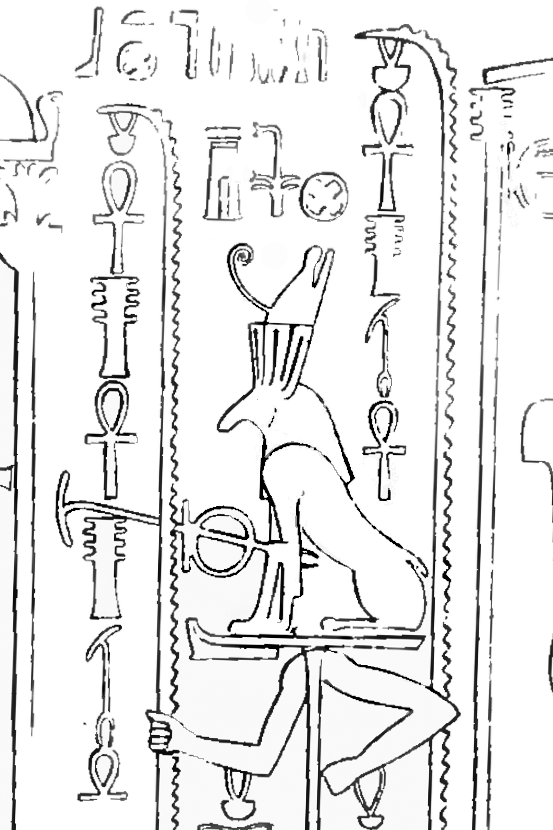
|
Granite, height 195cm, width 72cm, originally found at Medinet Habu
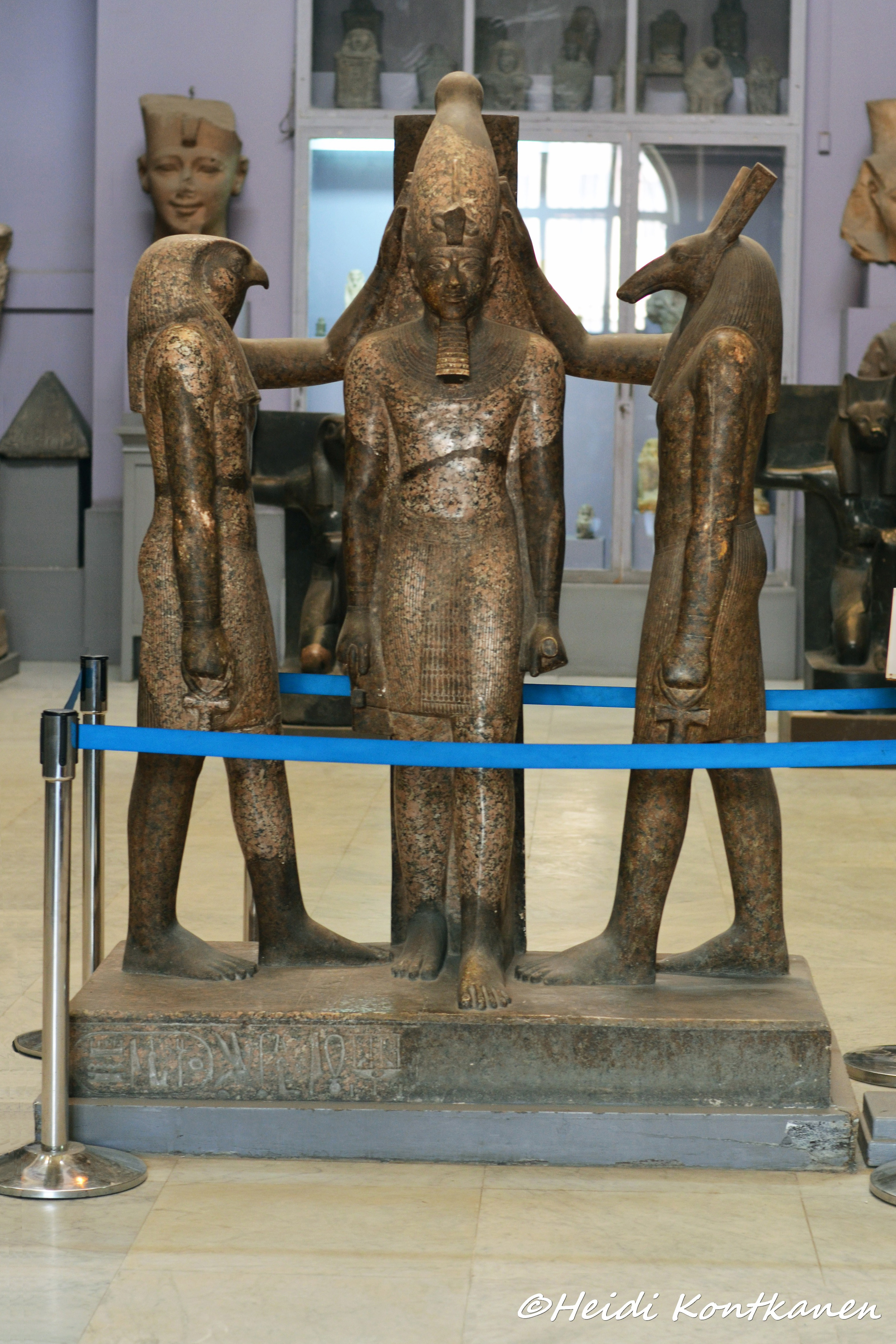
This photo is by Heidi Kontkanon, 2016
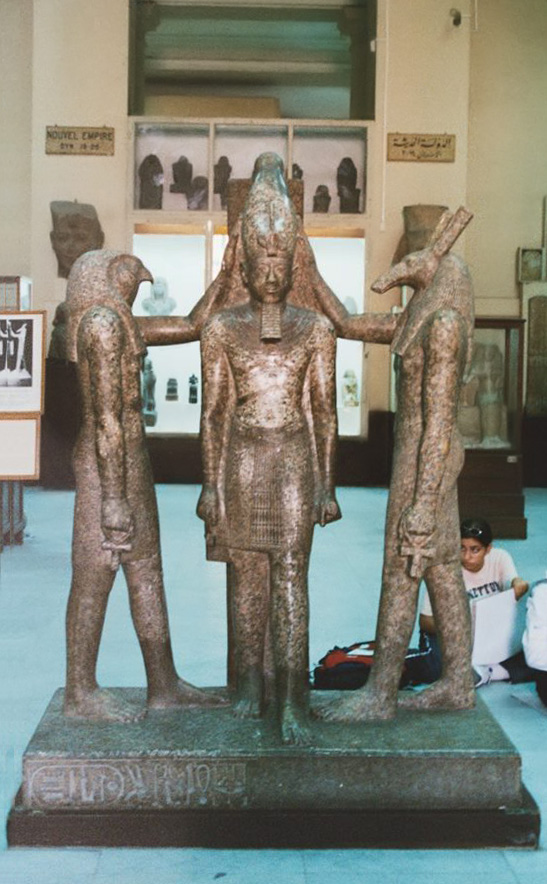
Photo by James Whitfield, 2000
| Probably the most exquisite Set sighting of all, this statue portrays a theme seen from the Old Kingdom, as depicted in Unas pyramid onwards. |
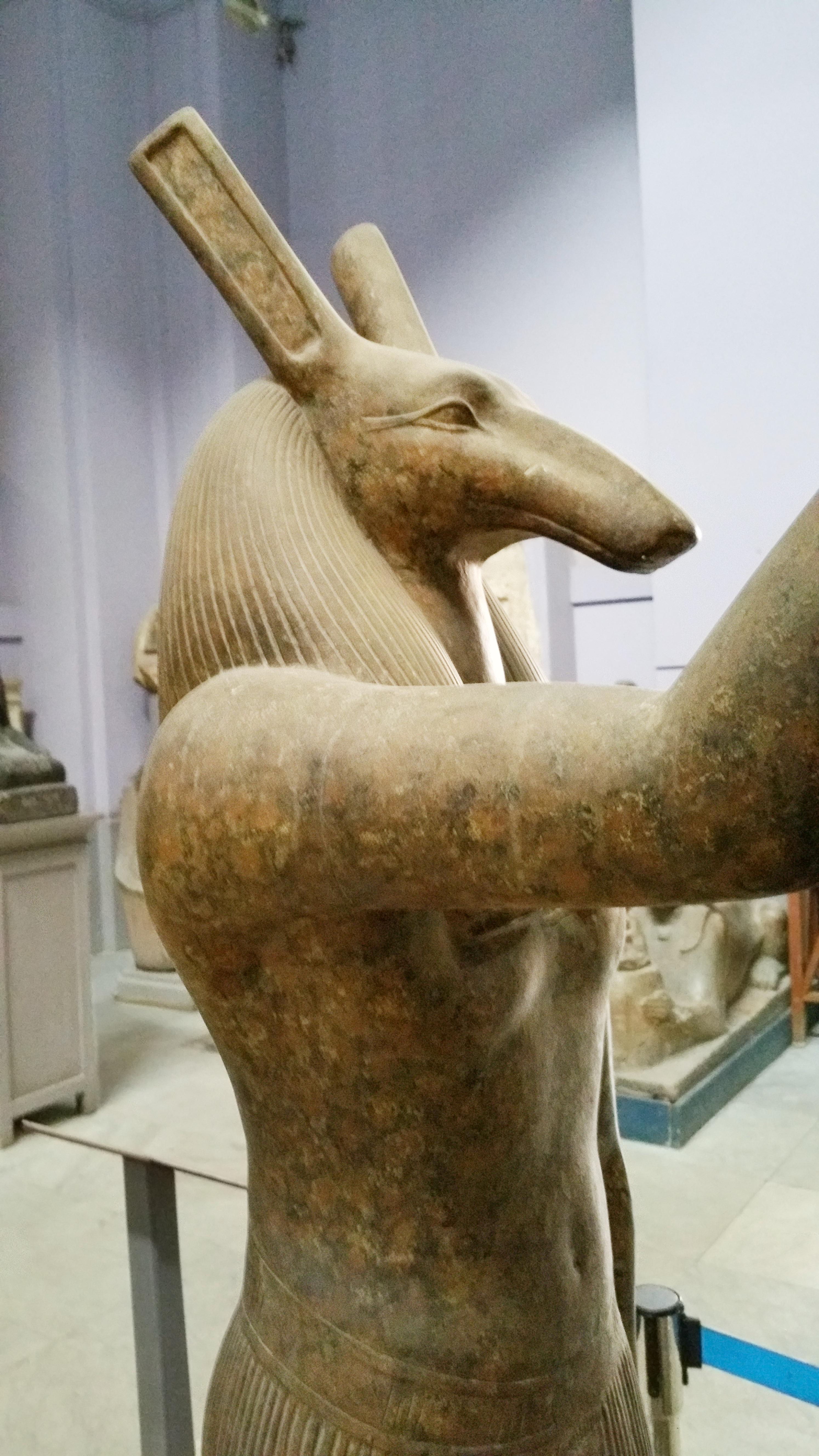
This lovely photo is by a colleague who calls himself "Setken"
I created a version with faked out borders to print 6x8
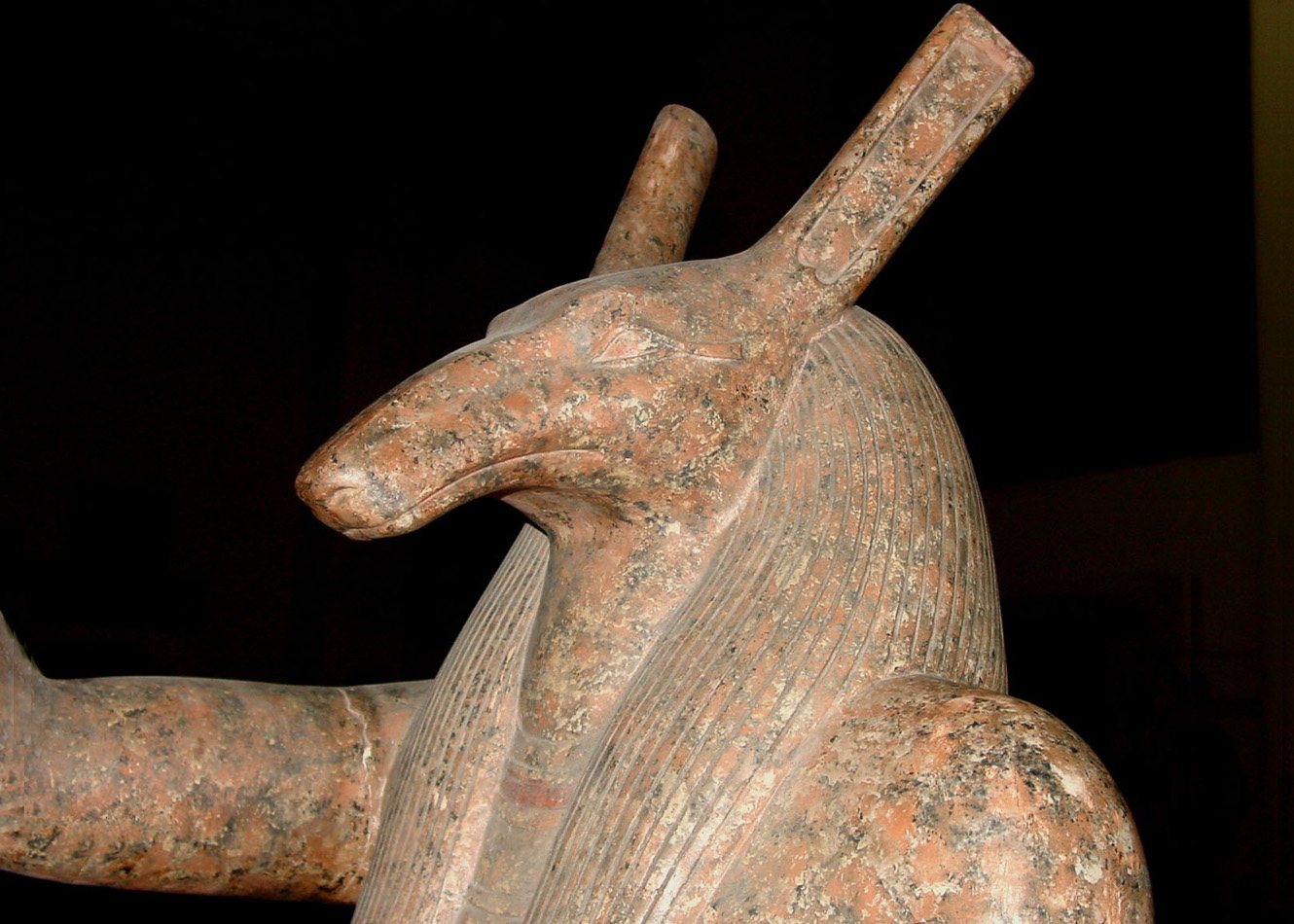
I found a beautiful close up of this Set, taken by 'Tutincommon'.
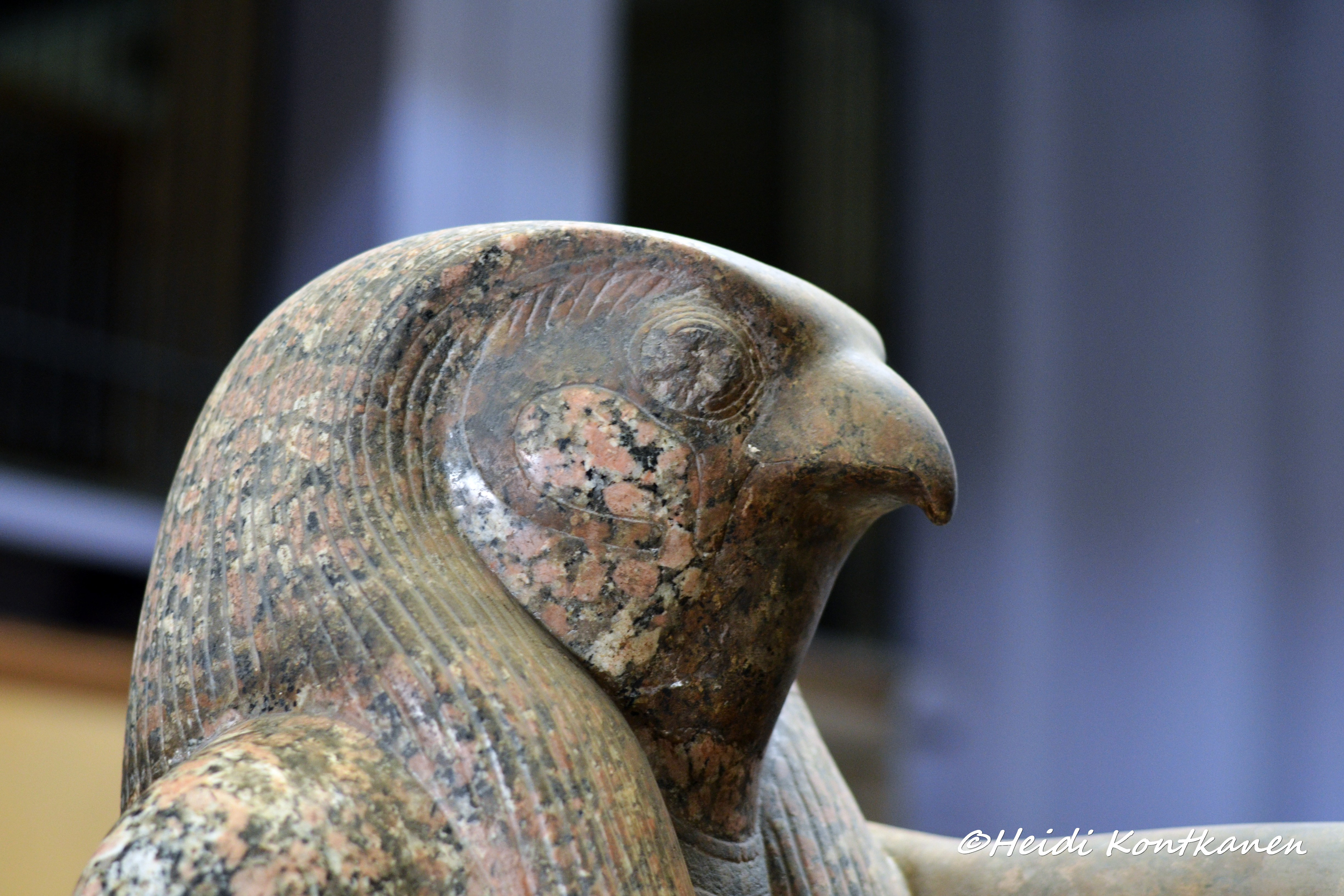
And for a bit of balance, here's Horus. Photo by Heidi Kontkanon, 2016
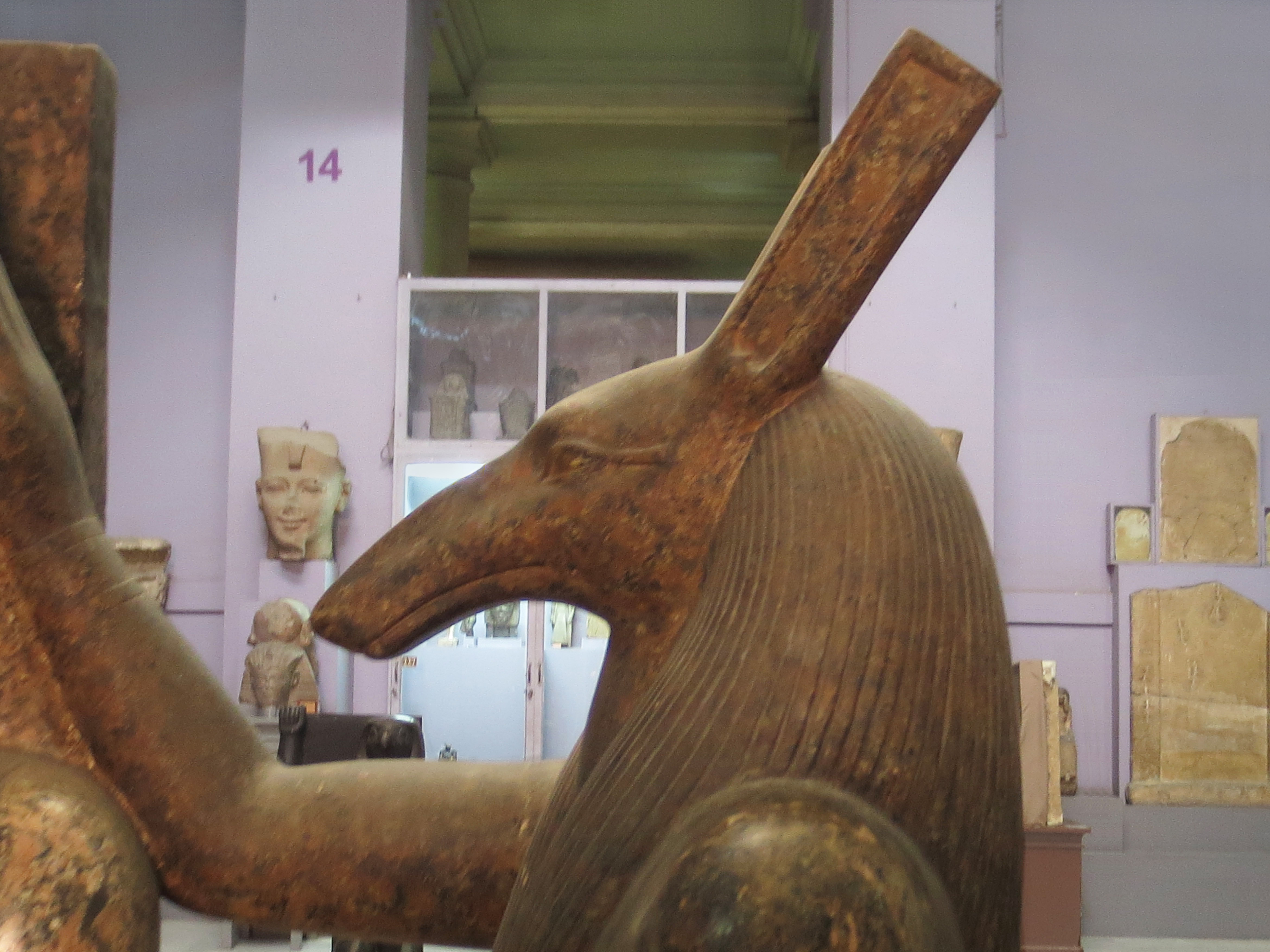
This photo is also by Setken...
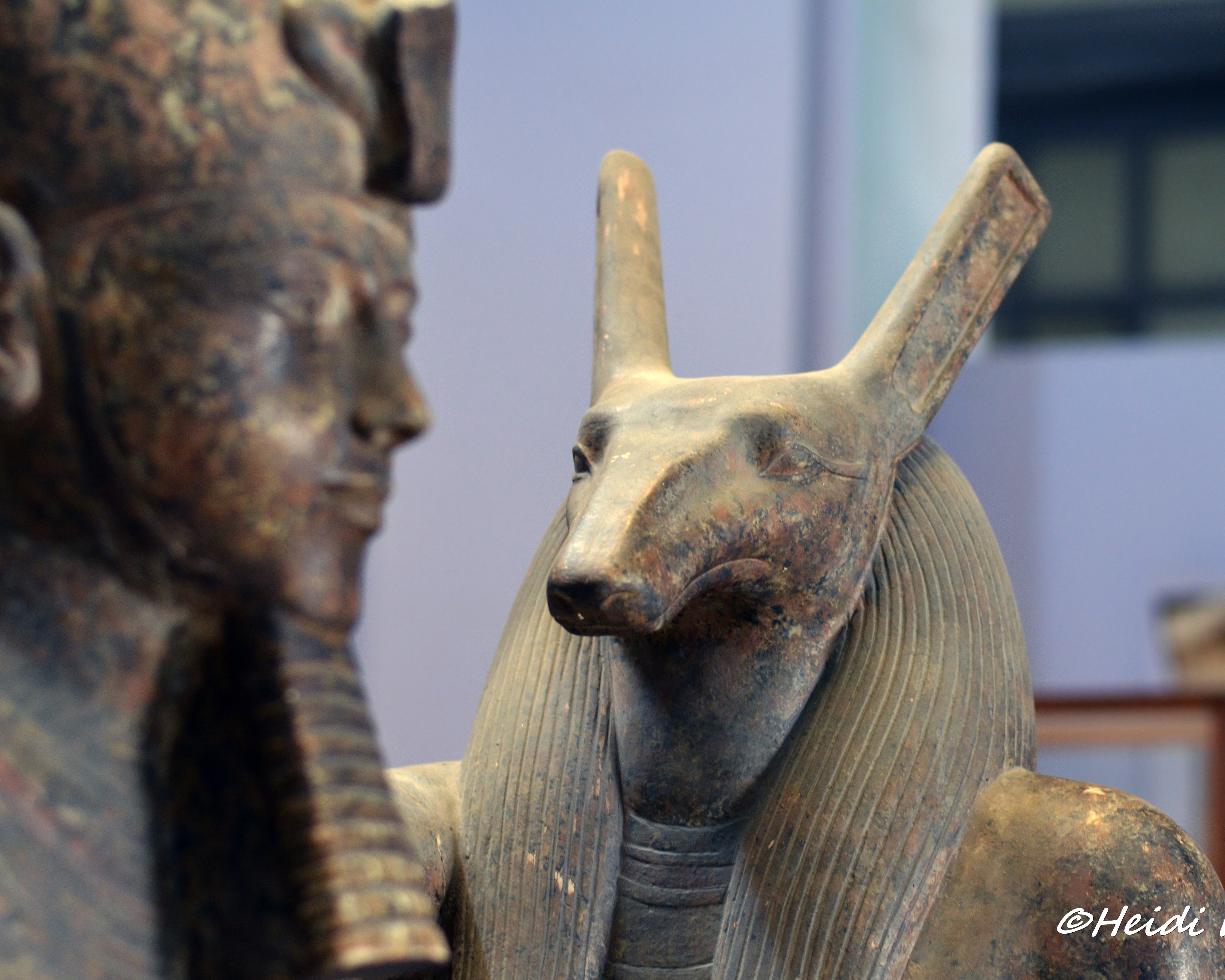
This photo is by Heidi Kontkanon (cropped by me ...)
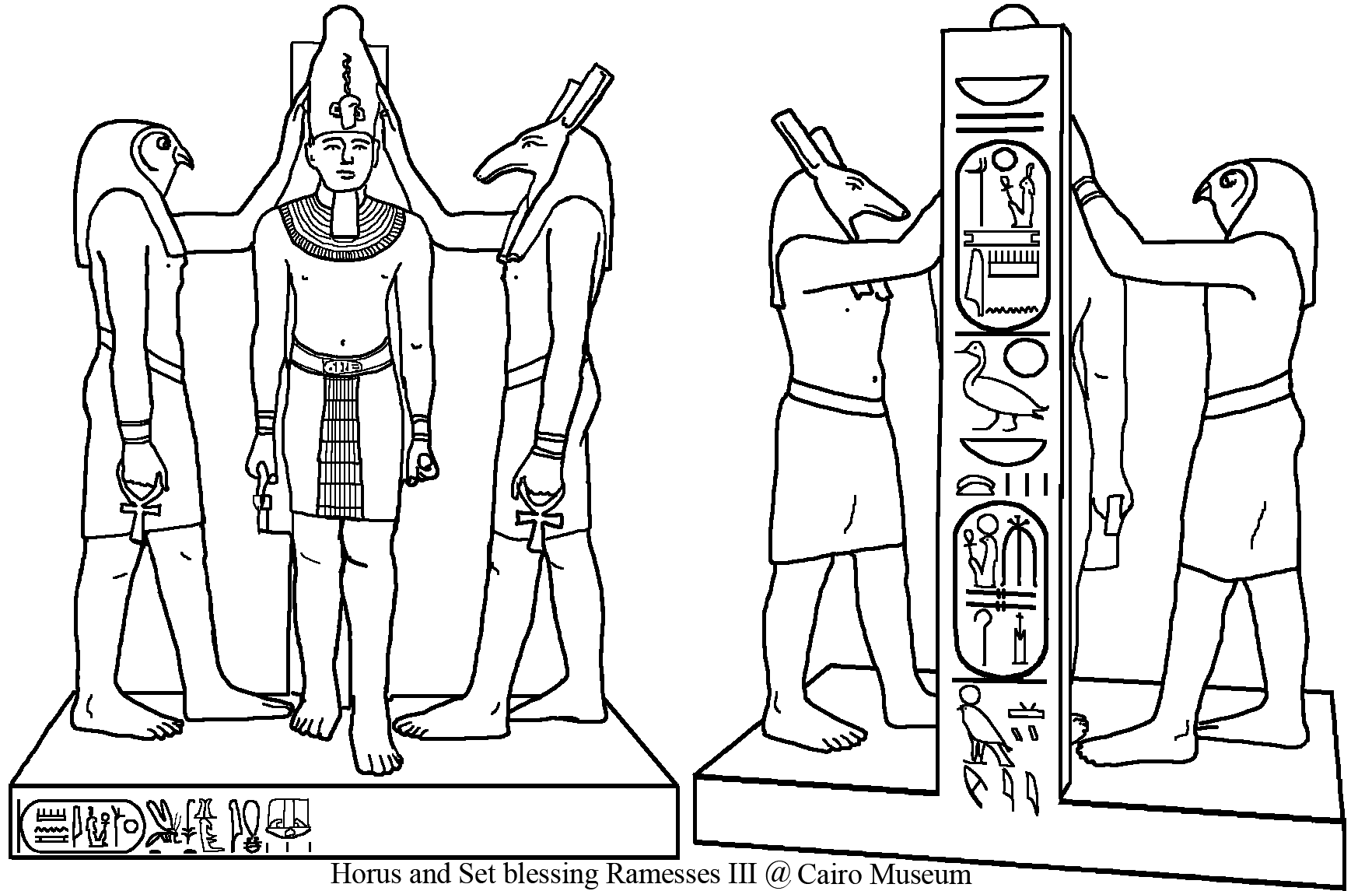
Tracing of the reverse from 'Match 5' at flickr.com
|
The text at the Global Museum explains:
"Each god has placed one hand on the crown of the king, performing the Coronation of Ramesses the Third.". This is likely the 'accession' referred to in _Shamanic Wisdom in the Pyramid Texts_ by Jeremy Naydler. Merriam-Webster defines 'accession' as "the act of coming to high office or a position of honor or power <her accession to power>"
Naydler explains:
The baptismal water he refers to shows in a much later relief "Horus and Thoth purifying Ptolemy XIII at the temple of Kom Ombo". In both Unas and Ramses III, the deities have their hands at the pharoah's crown.
I wondered at this change to Horus and Thoth, rather than Horus and Set, and thought it was due to changing attitudes towards Set. But Wilkinson shows this is not so, for even when Set is not shown, he is still understood to be there:
Giving examples of when 'two' actually represents 'four', "in a classic study of the royal purification ritual, Sir Alan Gardiner showed that the two gods usually depicted performing the act of lustration - Horus and Thoth (ill. 124) - actually represented the four gods of the cardinal points Horus, Seth, Thoth, and Anti who transferred to the king a portion of their power as the divinities of the four quarters of the world. Private representations of funerary purifications (which were symbolically parallel) actually show four priests performing the rite, but the royal depictions of this ritual almost always depict only two of the deities, perhaps for purposes of symmetry and representional balance. Whatever the reason, once again we see two representing four and thereby carrying the connotation of the extended number, though the use of the two deities Horus and Thoth (paralleling the common use of Horus and Seth) may also have connoted the dualism of Upper and Lower Egypt." (from _Symbol and Magic in Egyptian Art_, by Richard H. Wilkinson, page 139) |
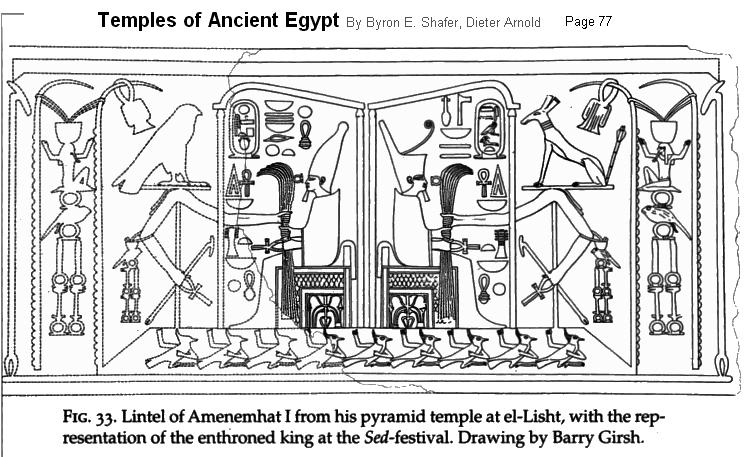
Again, the pharoah is at his sed festival and the palms are being presented
_Temples of Ancient Egypt_, by Byron E. Shafer, Dieter Arnold, page 77
(Closer view of Set available
|
Senwosret III, a later king in the 12th Dynasty, is seen receiving their blessings. A search of Karl Richard Lepsius' Denkmäler aus Aegypten und Aethiopien, turns up an image 18th dynasty's last pharaoh being blessed by Set and Horus:
|
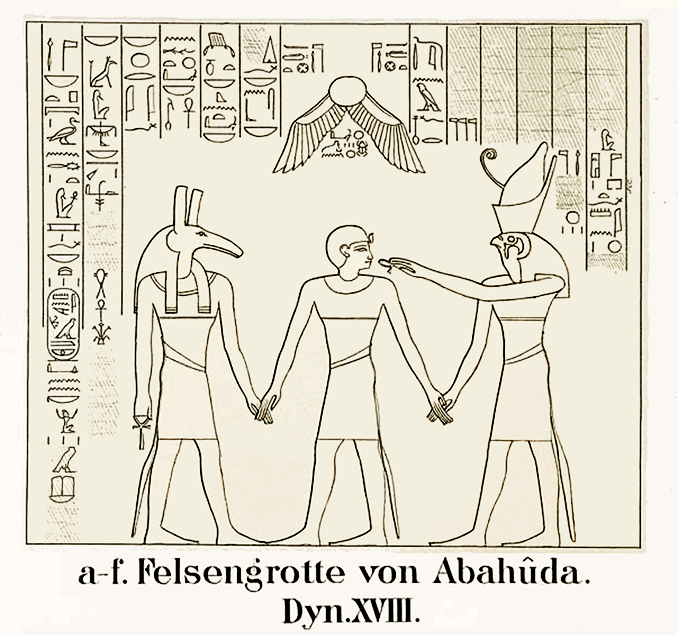
Felsengrotte von Abahuda = Rock Grotto from Abahuda

Prenomen: Djeserkheperure Setepenre, Nomen: Horemheb, (about 1319-1292 BC)
|
Horemheb's birth name and epithet was Horemheb Meryamun, meaning "Horus is in Jubilation, Beloved of Amun". Believed to be a commoner, he rose to power under Tutankhamun, and "With energy and dedication, he sought to return the cult of Amun to its pre-Akhenaten glory, and to reverse the corruption and power imbalances brought about by Akhenaten’s over centralization of powers." -Virtual-Egyptian museum. Horemheb played an interesting role in Egypt's history. Not only did he do much to clean up the mess Akhenaten had made, he initiated the nineteenth dynasty when he appointed Paramessu to be prince regent and vizier who then assumed the throne as Ramesses I when Horemheb died. "The role assigned to Paramessu once more reveals Horemheb's preoccupation with the military situation in Egypt's northern terrorities. Paramessu's family came from Avaris, the former capitol of the Hyksos, and the role of its local god Seth, who had retained strong connections with that of Horus of Hutnesu in Horemheb's career. In the light of this it is interesting to observe that Horemheb built a temple for Seth at Avaris. The Ramessid royal family considered the god Seth to be their royal ancestor, and a fragment of an obelisk (originally from Heliopolis), recently discovered on the seabed off the coast of Alexandria, shows Sety I as a sphinx with the head of the Seth-animal offering to Ra-Atum." (_The Oxford History of Ancient Egypt_, edited by Ian Shaw, page 294) Seti I, who reigned not very long after Horemheb, has scenes in which he is being purified thusly by Set and Horus. Merenptah, who ruled directly after Ramesses II, who has a blessing scene at Abu Simbel has a Heb-Sed festival lintel as well: |
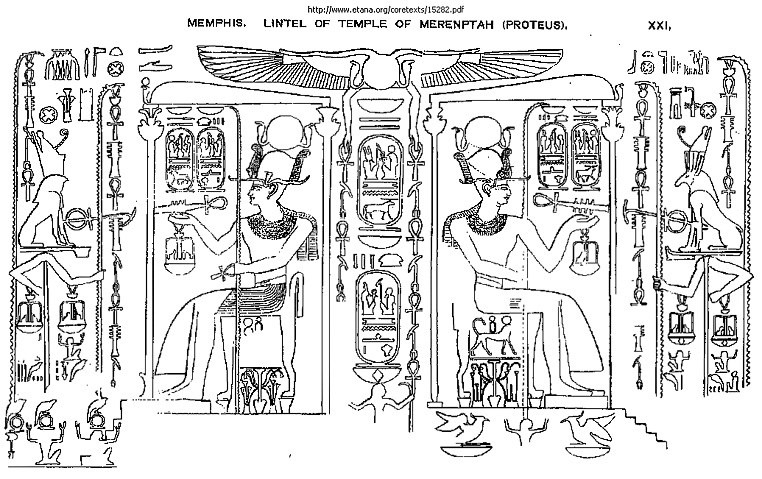
Lintel of Temple of Merenptah, Memphis
_THE PALACE OF APRIES(MEMPHIS II)_, by W. M. FLINDERS PETRIE
http://www.etana.org/coretexts/15282.pdf
Sed-heb festival:
Above Horus the inscription reads "He of Behudet (Edfu), the great god presiding over the shrine of the North."
Above Set is "He of Nubt (Ombos) the great god, presiding over the shrine of the South."
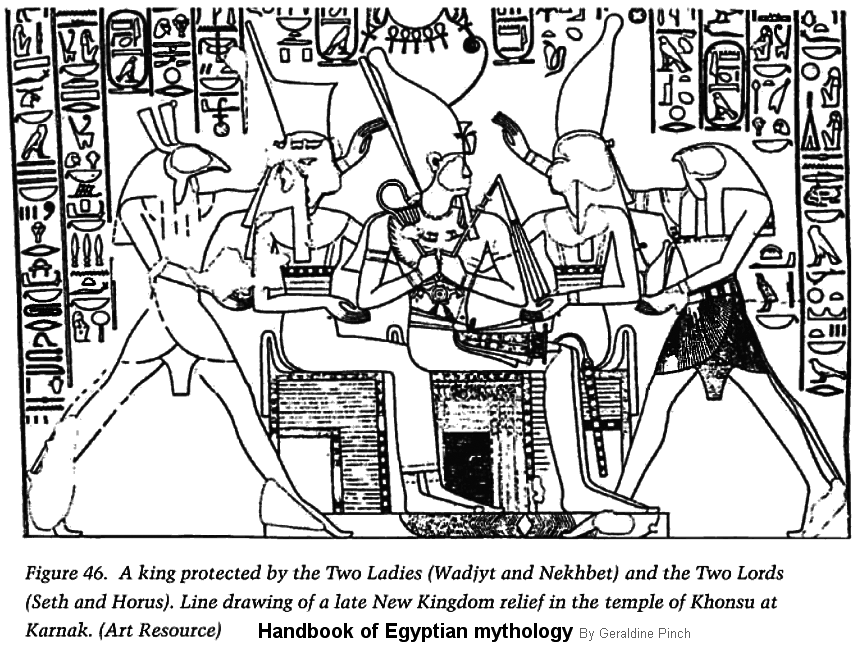
"Figure 46. A king protected by the Two Ladies (Wadjyt and Nekhbet) and the Two Lords (Seth and Horus.
Line drawing of a late New Kingdom relief in the temple of Khonsu at Karnak. (Art Resource),_Handbook of Egyptian mythology_, page 212
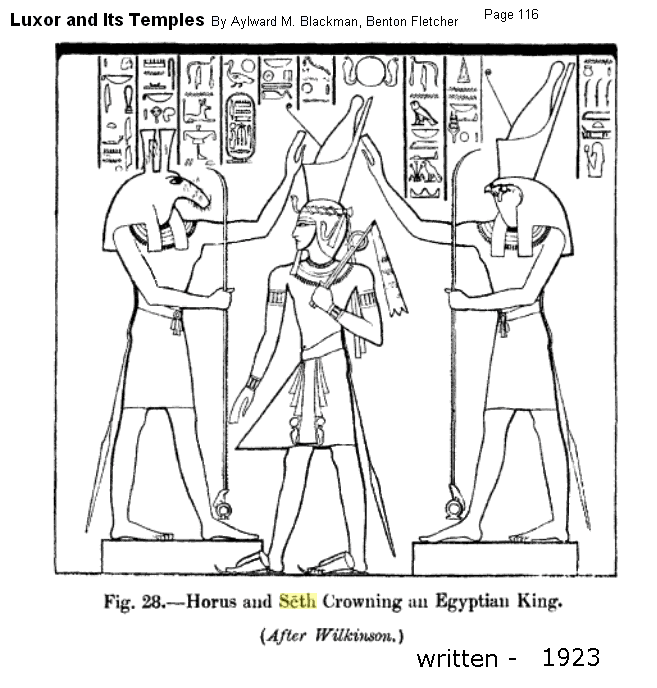
From _Luxor and Its Temples_ by Aylward M. Blackman and Benton Fletcher, originally published in 1923
The authors give credit to a 'Wilkinson' for the image.
(But after looking at Wilkinson's woodcuts (via Google book search), I suspect Lepsius is really the source.)
Note this scene features both the palm branchs and the upraised hands. What pharaoh is it? Rameses II?
Also see the relief of Rameses II being blessed by Set and Horus.


